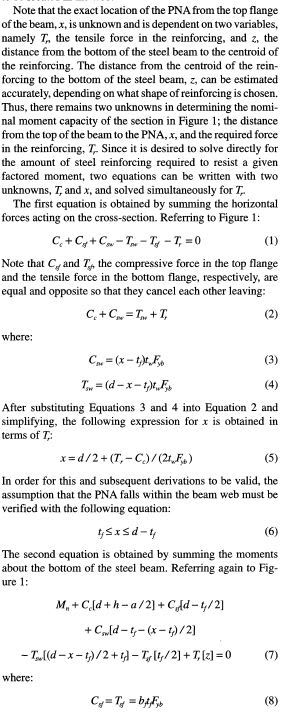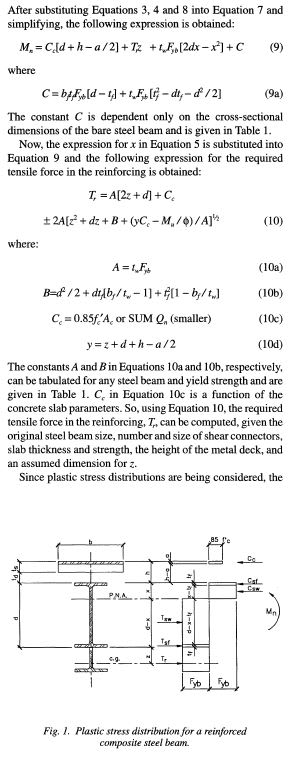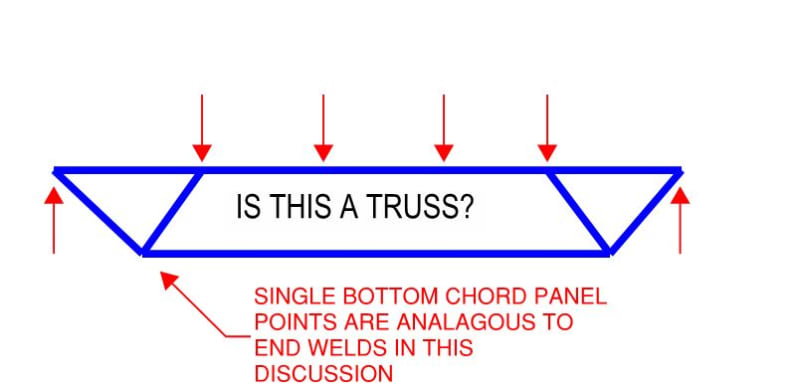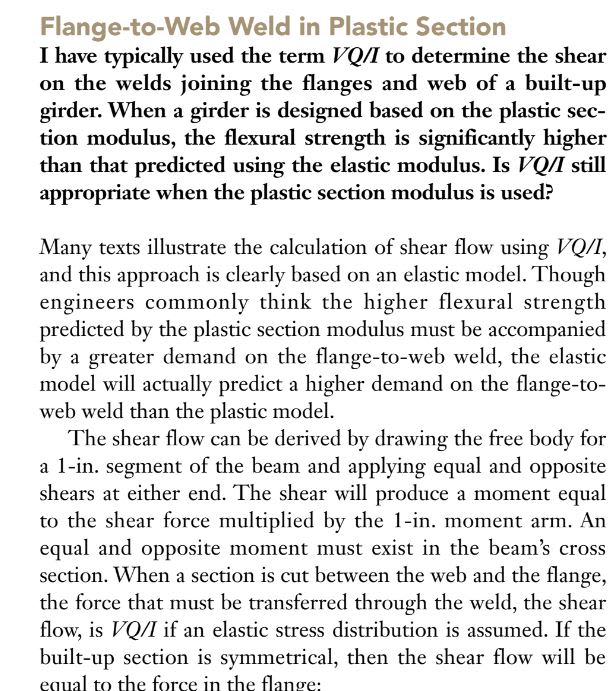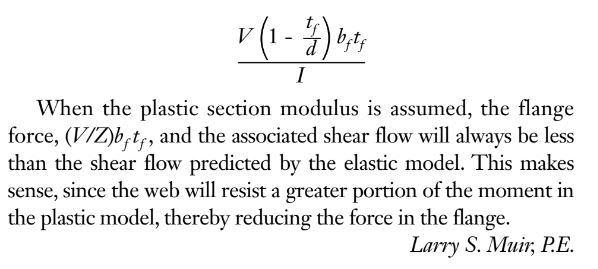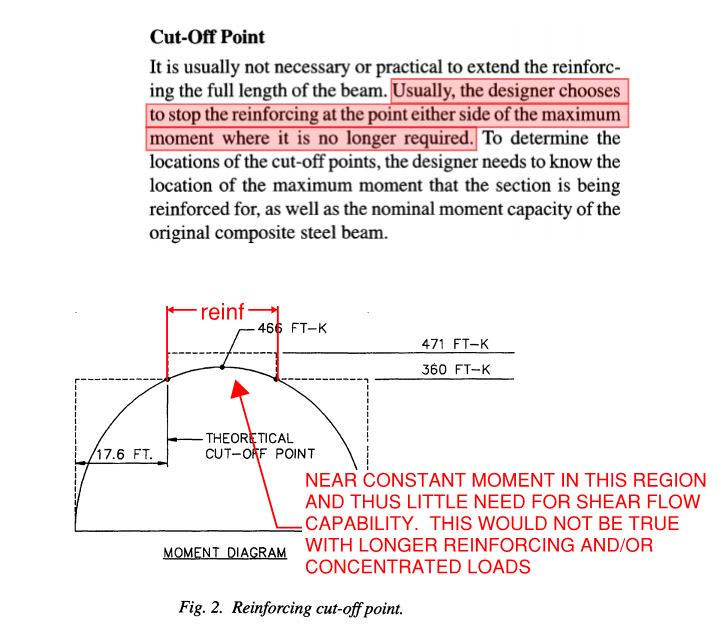iStruct said:
Likely we will have to agree to disagree...
I don't have that setting. I view every "agree to disagree" as a wasted opportunity for smart people to suss out the truth. That said, if you wish to disengage, there will certainly be no hard feelings on my end.
iStruct said:
I do know that there is "engineering stuff" that has to be done which is the plastic analysis and then developing the ends of the WT to ensure composite action.
AND providing for shear flow between the end welds. Doing otherwise is akin to calling the thing below a truss.
iStruct said:
Also they do say on the AISC provided slide 105 that MQ/I is only applicable if section remains elastic.
1) How much stock do we really want to put in one set of PDF slides with an unknown author? It's worth remembering that, often, these things are put together by other engineers just like us. And, therefore, our opinions are just as valid as theirs. This really is a pretty arcane topic and it would surprise me not at all if the author of the slides was not fully aware of the nuances.
2) By "not applicable", the author of the slides may well have meant "not strictly accurate", which is of course true. However, a thing need not to be accurate if it is universally conservative, not
excessively conservative, and expedient as the VQ/It method would be in this situation.
3) This topic was broached by Larry Muir in the July 2014 edition of
Steel Interchange. I've included the relevant sections below.
4) For beams composite with a concrete deck, "knowing" the shear flow demand with any accuracy is quite the ask. Back in 2014, I started my own thread on this topic with what I thought were some very interesting observations:
Link. Sadly, that was back before I knew how to embed sketches into posts but there are some good sketches included as attachments. The moral of the story is this: for a beam composite with a concrete deck, an accurate determination of the plastic shear flow requirement is pretty much impossible. At that's
without considering reinforcement. Viewed in that light, conservatively using VQ/It makes rather a lot of sense. It probably also makes sense to be conservative with the end welding and the location of the cutoff points.
iStruct said:
I would think it would be silly to make a guide for only short length reinforcement.
Me too but, having procured and read the entirety of the article now, that seems to the case. In both the body text and the example, the author is clearly thinking about partial reinforcement as shown below. In my opinion, it was an oversight on the part of the author not to have mentioned the need for distributed, shear flow welding in many situations. It happens. As with with the slides, the author is just another engineer like us (principal at some firm), not a PhD / world authority on the composite mechanics of things.

